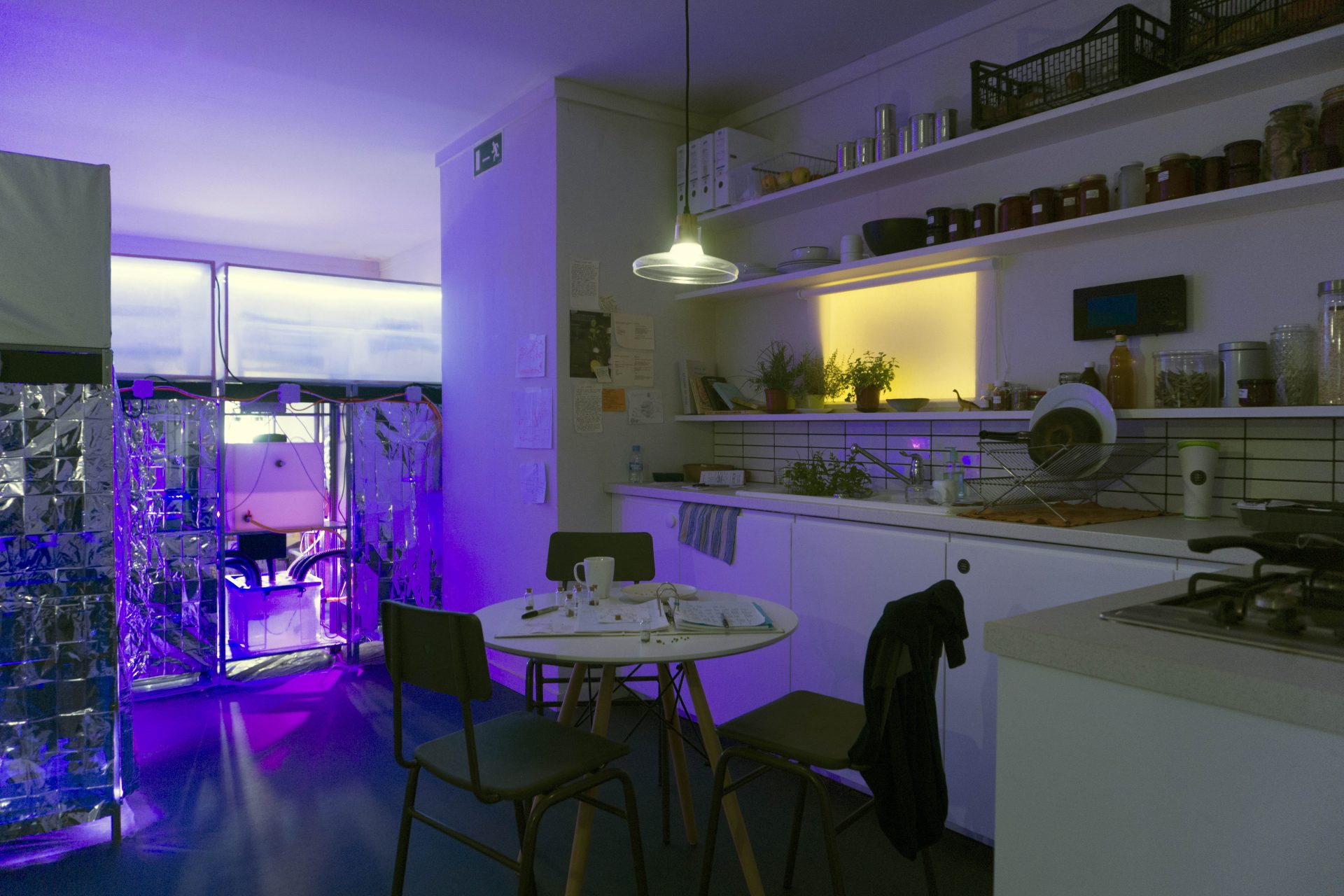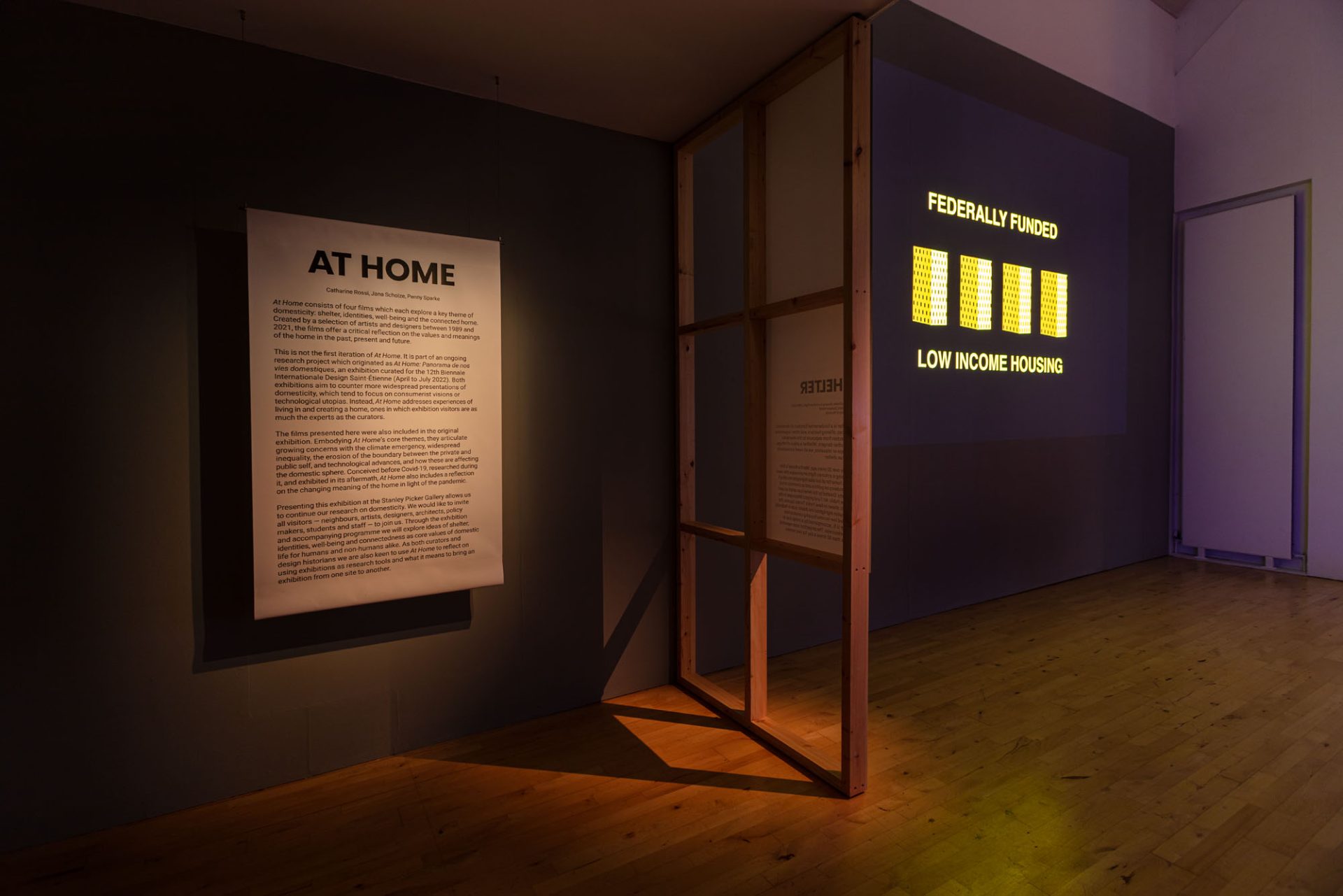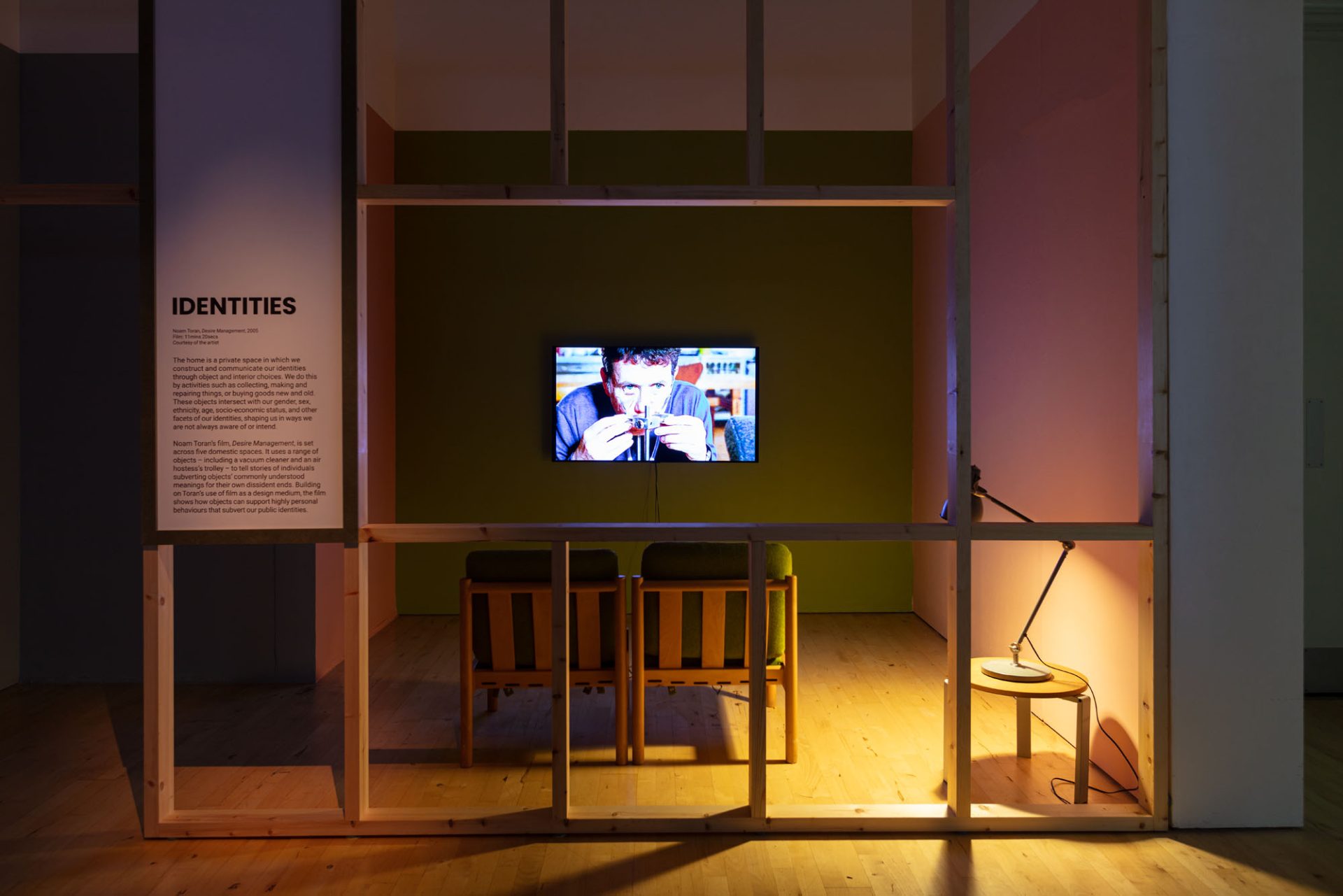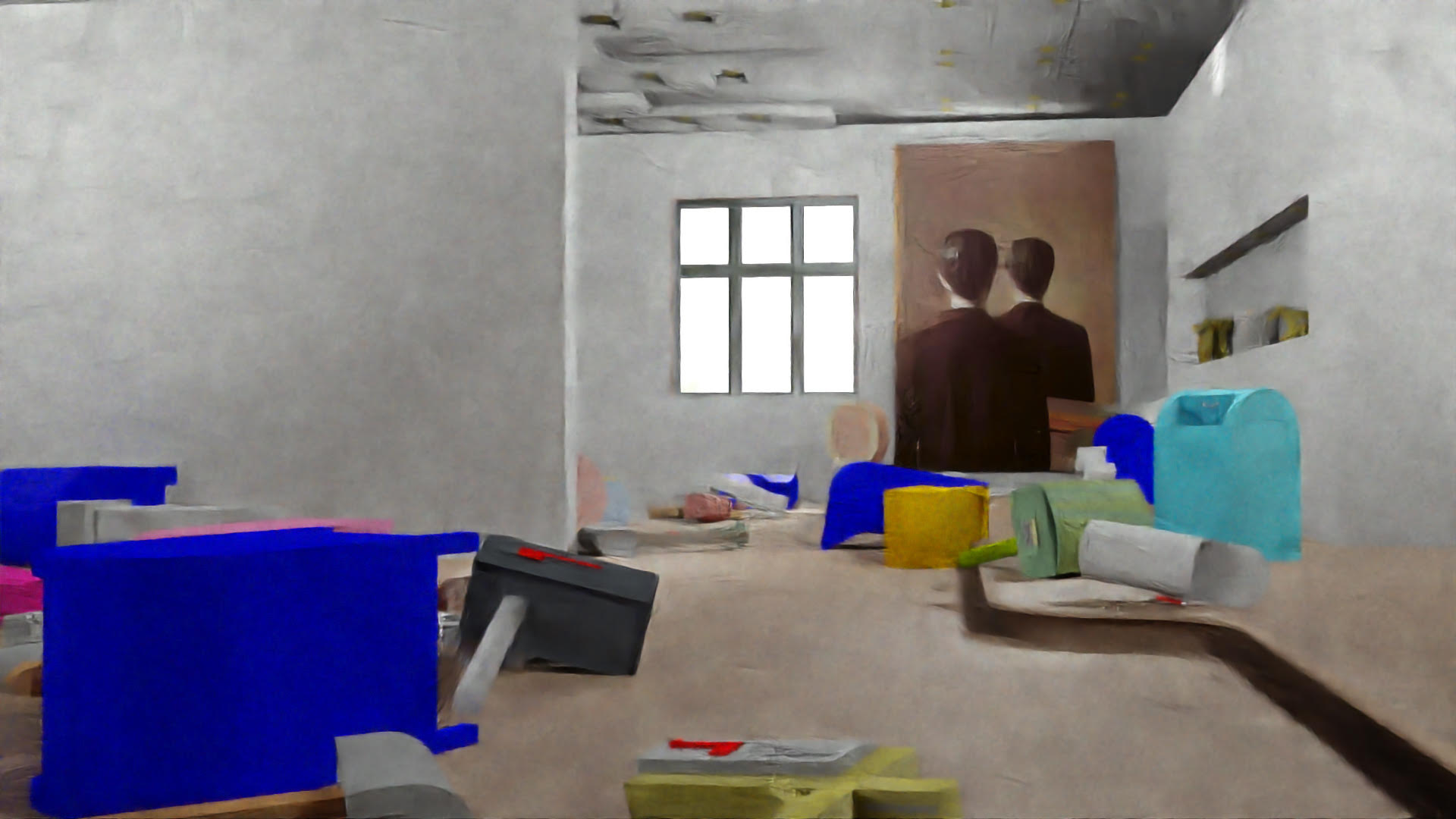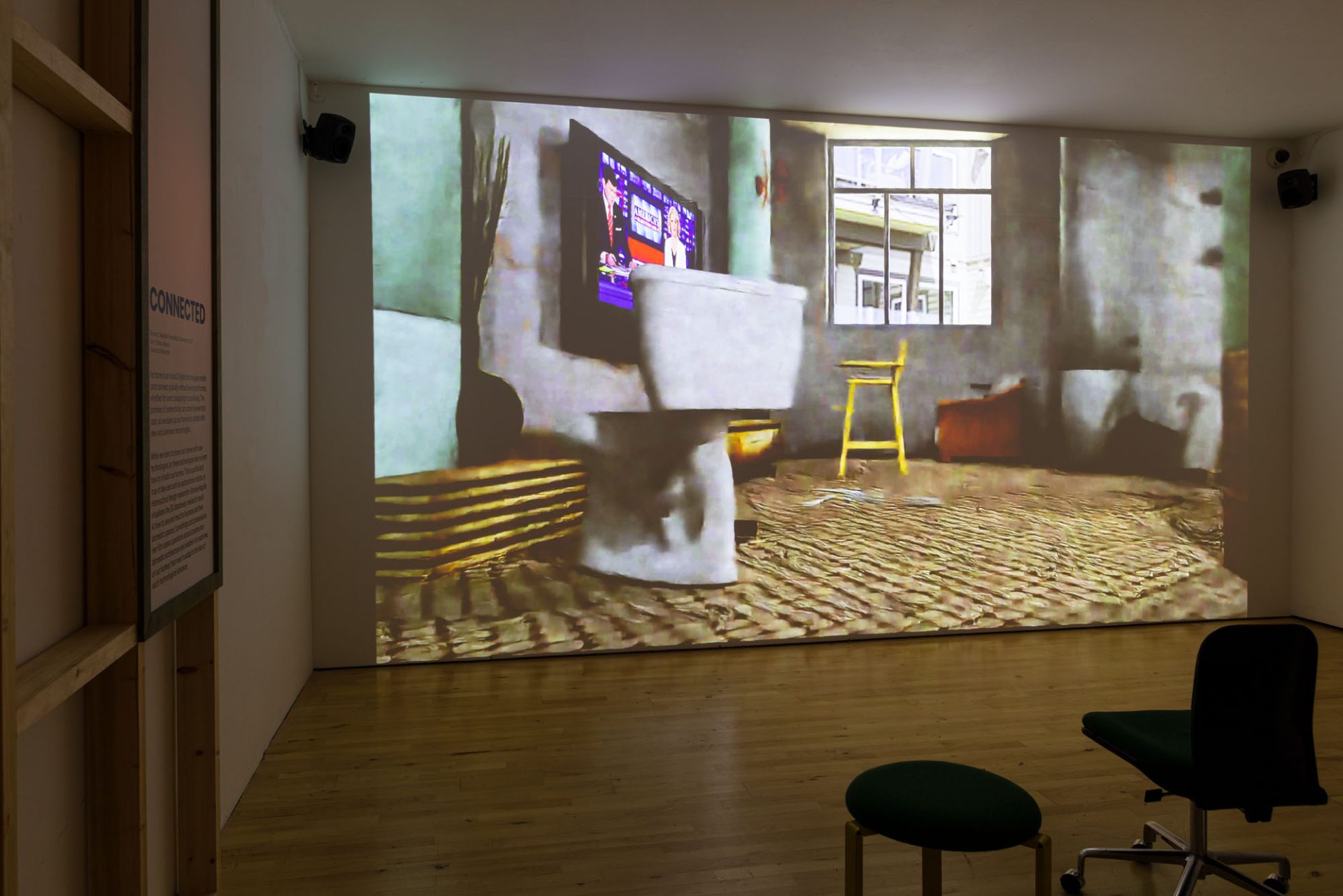Exhibition Launch: Wednesday 16 November | 6pm-8.30pm
*Closed 20-31 Dec 2022 / Reopen 3 Jan 2023
At Home consists of four films which each explore a key theme of domesticity: shelter, identities, well-being and connectivity. Created by the artists, designers and researchers Martha Rosler, Noam Toran, Superflux, and Simone Niquille between 1989 and 2021, the films offer a critical reflection on the values and meanings of the home in the past, present and future.
The exhibition is the next step in an ongoing research project by Jana Scholze, Penny Sparke and Catharine Rossi, three members of Kingston University’s Modern Interiors Research Centre. It originated as At Home: Panorama de nos vies domestiques, an exhibition curated for the 12th Biennale Internationale Design Saint-Etienne (April to July 2022). Countering more widespread presentations of domesticity focused on consumerist visions or technological utopias, At Home instead addresses experiences of living in and creating a home, wherein exhibition visitors are as much the experts as the curators.
In particular, the films articulate growing concerns with the climate emergency, widespread inequality, the erosion of the boundary between the private and public self, and technological advances, and how these are affecting the domestic sphere. Conceived before Covid-19, researched during it, and exhibited in its aftermath, At Home also includes a reflection on the changing meaning of the home in light of the pandemic.
The exhibition invites all visitors – neighbours, artists, designers, architects, policy makers, students and staff – to join the curators in continuing their At Home research. Through the exhibition and accompanying programme it will explore ideas of shelter, identities, well-being and connectivity as core values of domestic life for humans and non-humans alike. At Home is also an opportunity to reflect on using exhibitions as research tools and what it means to bring an exhibition from one site to another.
Films
Shelter: Martha Rosler, Housing is a Human Right, 1989/2017
Martha Rosler works in video, photography, text, installation, and performance. Her work focuses on the public sphere, exploring issues from everyday life and the media to architecture and the built environment, especially as they affect women. Rosler has for many years produced works on war and the national security climate, connecting life at home with the conduct of war abroad, in which her photomontage series played a critical part. She has also published several books of photographs, texts, and commentary on public space, ranging from airports and roads to housing and gentrification. A retrospective of her work has been shown internationally, and her writing is published widely in publications such as Artforum, e-flux journal, and Texte zur Kunst. In 2012, she presented a new series of photographs, taken during her trip to Cuba in January 1981, and in November, she presented the Meta-Monumental Garage Sale at MoMA in New York. Her most recent publications include Culture Class (2013; Spanish trans.: Clase cultural. Arte y gentrificación, 2014), on artists and gentrification; Martha Rosler: Irrespective (2018), accompanying her survey show in New York; and La Dominación y lo cotidiano: ensayos y guiones (2019), a book of essays and scripts in translation. Rosler lives and works in Brooklyn.
Identities: Noam Toran, Desire Management, 2005
Noam Toran’s work involves the creation of intricate narratives developed as a means to disrupt hegemonic historiographies. Drawing from marginalised or neglected histories, Toran reflects upon the interrelations of memory, erasure, mythology, identity, and the essential force of storytelling as embodied in archives, film, literature, and performance. The work is materialised through dramatisations that take the form of installations, educational models, films, performances and scripts. Noam is currently working on his solo exhibition We Crave Blood for the Rawart Gallery in Tel Aviv (February – March 2023).
Wellbeing: Superflux, Mitigation of Shock, Singapore, 2019
Anab Jain studied filmmaking at the National Institute of Design before moving to London to gain her Masters at the Royal College of Art. In 2009, she co-founded Superflux with Jon Arden. She’s been awarded an Honorary Doctorate from the University of the Arts and is also the recipient of the Award of Excellence ICSID, UNESCO Digital Arts Award, and Grand Prix Geneva Human Rights Festival, as well as awards from Apple and the UK Government’s Innovation Department. Her work has been exhibited at MoMA New York, V&A Museum, Science Gallery Dublin, National Museum of China, Vitra Design Museum, and Tate Modern. She currently serves as Professor of Design Investigations at the University of Applied Arts, Vienna.
Born and educated in the UK, Jon Arden holds an MA in Design Interactions from the Royal College of Art. He leads the Studio’s conceptual and technical research projects. His work has been exhibited at the MoMA New York and V&A London on numerous occasions, and he has won prizes from UNESCO and New York’s Social Design Network. He has lectured at the Architectural Association London, MAD Faculty Genk, Belgium, and Kitchen Budapest Hungary.
Connectivity: Simone C Niquille/Technoflesh, Homeschool, 2019
Simone C Niquille is a designer and researcher based in Amsterdam NL. Her practice Technoflesh investigates the representation of identity & the digitisation of biomass in the networked space of appearance. Her work has been exhibited internationally, most recently at HeK-Haus der Elektronischen Künste (2020), Fotomuseum Winterthur (2019), La Gaite Lyrique (2019). She has published writing in Volume Magazine, AD Architecture and e-flux. She is Chief Information Officer at Design Academy Eindhoven. In 2016 she was Research Fellow of Het Nieuwe Instituut Rotterdam and is commissioned contributor to the Dutch Pavilion at the 2018 Venice Architecture Biennale. Niquille is recipient of the Pax Art Award 2020 and 2021/22 Mellon Researcher at the Canadian Center for Architecture. Currently she is investigating the architectural and bodily consequences of computer vision, researching the politics of synthetic training datasets.
Exhibition design by Plaid
Curated by Jana Scholze, Penny Sparke and Catharine Rossi
